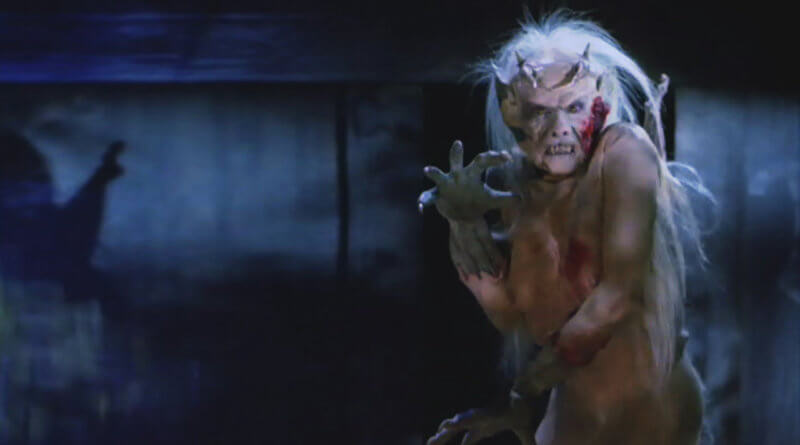Review: The Unnamable (1988) ★
No one said it was easy to adapt H.P. Lovecraft to film, but the people behind The Unnamable (1988) make it look especially difficult. Lovecraft’s 1923 short story of the same name doesn’t really lend itself to a visual format either; the creature at the center of the plot is unnamable because its horrors cannot be adequately described. Thus, making a movie about something that is vague, immeasurable, and completely indescribable feels like a bit of a misstep.
The Unnamable (1988) Plot Overview
Nonetheless, director Jean-Paul Ouellette did what he could, relying on a couple of Lovecraft’s references to a horned creature with hooves. The film shifts between the 17th century and present day (1988, that is) to explain the origins of the monster. In essence, a man named Joshua Winthrop kept a creature locked away in the attack, where it screamed and beat against the walls. When he tried to calm her down, the beast killed him.
Fast-forward to the present day, where an unbearably pretentious and goofy college student named Randolph Carter (Mark Kinsey Stephenson) retells the myth of the unnamable to his classmates, Howard (Charles Klausmeyer) and Joel (Mark Parra). Carter claims that the Winthrop house is nearby and that image of the Unnamable has been permanently burned into the glass of the attic window.
Randolph and Howard take the story much more seriously than Joel, who insists on entering the house to see things for himself. However, when Joel doesn’t show up for classes the next day, Howard starts to worry that something evil really is living inside. Joel’s disappearance forces Howard and Randolph to investigate the house, while a group of their classmates show up to try to have a secluded party.
The Unnamable Film Analysis

The 1980s was a Golden Age for B-movie horror, but unlike many of its contemporaries, The Unnamable verges on being unwatchable. The bad performances and cheesy dialogue are to be expected. After all, it’s a low-budget 80s horror movie featuring mostly non-actors. You get what you pay for.
That said, The Unnamable is worse than most “bad” 80s movies. All of the traditional elements are there: poorly-lit scenes, cheap sets, amateur camera work, muddy visuals, and a disjointed narrative. While all this makes it sound like any other B-movie from its day, The Unnamable adds insult to injury with horrible sound design. Every step is amplified as though all of the characters are wearing steel-toed boots. Other sounds are given an unnecessary and annoying echo effect. This was probably meant to add creepiness to an otherwise bland film, but it just gets distracting after a while.
There are plenty of other reasons to criticize The Unnamable. The Winthrop house is supposed to have been built sometime in the 17th century, but it clearly has 20th-century materials and architecture. Randolph Carter looks like he’s wearing his father’s jacket, as it’s about 4x too big for his thin frame. Half the time, the actors look completely lost, like they are just waiting for someone off-camera to give them stage directions. Even though the characters are always getting separated in the labyrinth that is the Winthrop house, they always seem to be running down the exact same hallway. The Unnamable cast went on to do very little else, probably because casting directors saw this movie. I could go on, but I think you get the idea.
Finally, this brings us to the beast for which the movie is named. Jean-Paul Ouellette clearly put most of his shoe-string budget into the creature makeup for the demon-like monster. The look of the monster isn’t terrible, but even it were amazing, it would still kind of take away from the whole “this-monster-is-so-terrifying-that-there-is-no-way-to-describe-its-physical-appearance” thing that underpins the story. When H.P. Lovecraft envisioned the Unnamable creature, I doubt he pictured a woman (Katrin Alexandre) prancing around in a leotard and a pair of horns.
In Conclusion
The Unnamable is good fodder for bad movie nights, but the poor sound quality and lack of production value will likely test most viewers’ patience. A bad movie like The Room (2003) is so bad that it’s good, but The Unnamable doesn’t have the same charm. Instead, it’s just a poorly made monster movie that somehow warranted a sequel with John Rhys-Davies.
Rating: ★ out of 5
If you’d like to watch The Unnamable (1988), it is available to stream or purchase via Amazon here. To read more movie reviews like this one, check out the Philosophy in Film Homepage.

